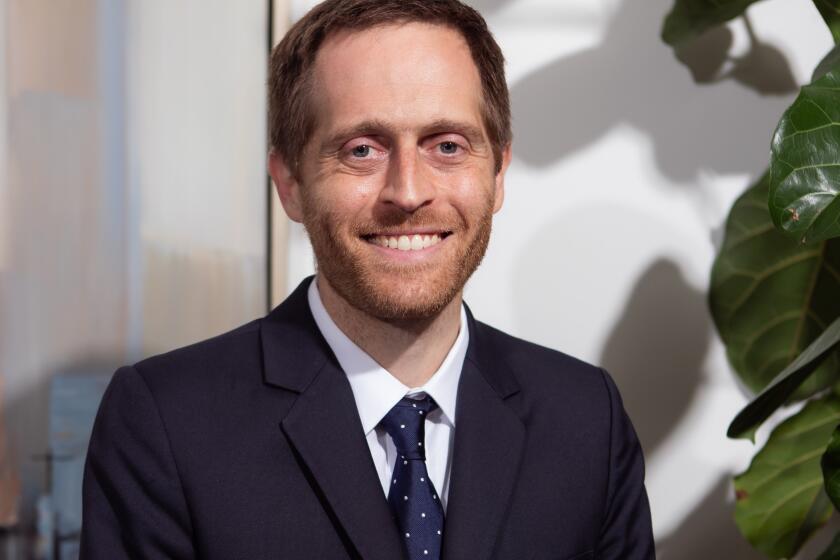This Bell Has Been Tolling for 85 Years : Religion: The oldest church in Lawndale celebrates its anniversary, having survived sparse attendance in early days and financial hardship through the present.
- Share via
When the huge cast-iron bell first echoed from the tower of the First Congregational Church of Lawndale in 1906, the sound swept over acres of almond fields and poultry ranches.
Today, the church serves as a reminder of the city’s sleepy past and a symbol of a simpler time.
Lawndale’s oldest church marked its 85th anniversary last week with the familiar chimes from the bell that has topped the church since the turn of the century. The First Congregational Church of Lawndale has stood on the corner of Mansel Avenue and 147th Street since the year San Francisco was nearly destroyed by a massive earthquake.
The church also has experienced a few rocky times of its own. Longtime congregation members tell of sparse attendance during the church’s pioneer days. The church has also been plagued by financial hardships, but has retained a loyal cadre of older parishioners.
Built on land donated by a real estate developer, the original church was a New England-style wood-frame with a high steeple and belfry. Old photos reveal a stark white clapboard structure surrounded by fields and undeveloped agricultural lands.
“When it was first built, it was one of the few things you could see around here,” said Rosine Drees, the church organist and a member for nearly 30 years.
For its first two decades, the church operated as a missionary church, with part-time ministers, paltry funding and fluctuating membership.
But its fortunes changed in the 1920s as an oil boom brought derricks and oil workers to Lawndale. In the 1930s, the congregation gradually grew large enough to support a full-time minister.
Lawndale Mayor Harold E. Hofmann, who’s lived in the city for nearly 60 years, said he vividly remembers the church because he attended the school next door when he was a boy.
“When I was in the seventh grade I rode my horse to school and I would tie him up just to the north of the church,” he said. Hofmann said the church was so distinct, he can still recall that it was fronted by three large trees and a white picket fence.
But the wood-frame structure was condemned as unsafe by city inspectors in the early 1960s. It was replaced by the current stone-in-cement structure. The cast-iron bell, which was the only artifact preserved from the early church, was set in the tower of the new building.
Isabelle Heflebower, who joined the church in 1953 and served as president of a support group called the Ladies Work Circle, lamented the demise of the old building.
“I remember the lawn and the trees and white picket fence,” she said. “I thought it was beautiful. I loved the old church.”
Ardythe Herrington said she lived near the church for many years before joining the congregation in 1968, after her oldest son, a Marine captain, was killed in Vietnam.
“This church was right under my nose, and I didn’t realize it,” Herrington said. The camaraderie among her fellow churchgoers has kept her involved with the congregation’s 80 members, she said.
“It’s an intimate, friendly church, and I think that’s good,” added longtime church member Drees. “I think some people can get swallowed up by a larger church.”
Despite its rich history, however, congregation members say the church’s survival is by no means guaranteed.
“We’re struggling,” said Harold Hobbs, who’s been a church member for nearly 30 years. “It’s hard because we’re a free church. We’ve been on our own.”
To help pay its bills, the church rents its facility to a group of Seventh-day Adventists, who use it to to hold church services. And limited advertising funds have stymied efforts to bolster the congregation’s numbers, said Chic Saunders, who took over as pastor two years ago.
Saunders said he was unaware of the church’s history when he accepted the post. He said his main goal is to keep the church moving forward.
“The past is important, but you can’t live (in it),” he said.
More to Read
Sign up for Essential California
The most important California stories and recommendations in your inbox every morning.
You may occasionally receive promotional content from the Los Angeles Times.













